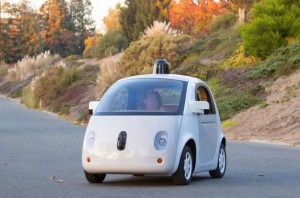Just recently, driverless (self-driving) cars belonged to the realm of science fiction, but a specific date is now set for the start of serial production.
Imagine that you rent a car through a mobile phone application. The car arrives at the specified address without a driver, and automatically takes you to your destination. Or drives your children to school. Or takes granny to the doctor.

Sounds incredible?
You may have to wait no more than a few years for this vision to materialise.
Google had first converted conventional cars into automatic vehicle. The modified cars travelled over 1.1 million kilometres in live traffic, with robotic drivers. The only accident occurred when the vehicle concerned was driven by a human being in manual mode.
Then the corporation started building its own self-driving cars. The first version of limited functionality was revealed in May 2014, with a fully functional prototype ready by Christmas. And according to a recent announcement, Google has agreed with large car manufacturers about serial production. The first self-driving cars should be on sale from 2020.
The same trend is fortified (albeit from a different side) by billionaire Elon Musk and his company Tesla, who are bent on the proliferation of electronic cars. Musk, also called “the real Iron Man” after Tony Stark, walks the talk, having funded and developed a vertically landing spacecraft. Just recently, he started to construct a tube train travelling at a mind-boggling 1,300 km per hour.
The latest four-wheel-drive Tesla car boasts 700 hp and two electric engines. It accelerates from zero to 100 km/h in 3.2 seconds, just like a Porsche or Ferrari, but soundlessly. The car is semi-automatic, i.e. its autopilot can be activated by the push of a button. The video clip below shows a Tesla accelerating. Then the autopilot is engaged, the car slows down, switches lanes, and stops all by itself.
Musk promises to manufacture fully automatic cars in five years; by 2020, Tesla’s production lines should pour out 500,000 vehicles.
These cars are certain to divide drivers. Some will welcome them while others will be afraid to sit into a self-driving vehicle. Proponents argue that most accidents are caused by human error as a tired, careless, aggressive or drunken driver can cause much more damage than a machine that has no emotions but focuses on driving only.
